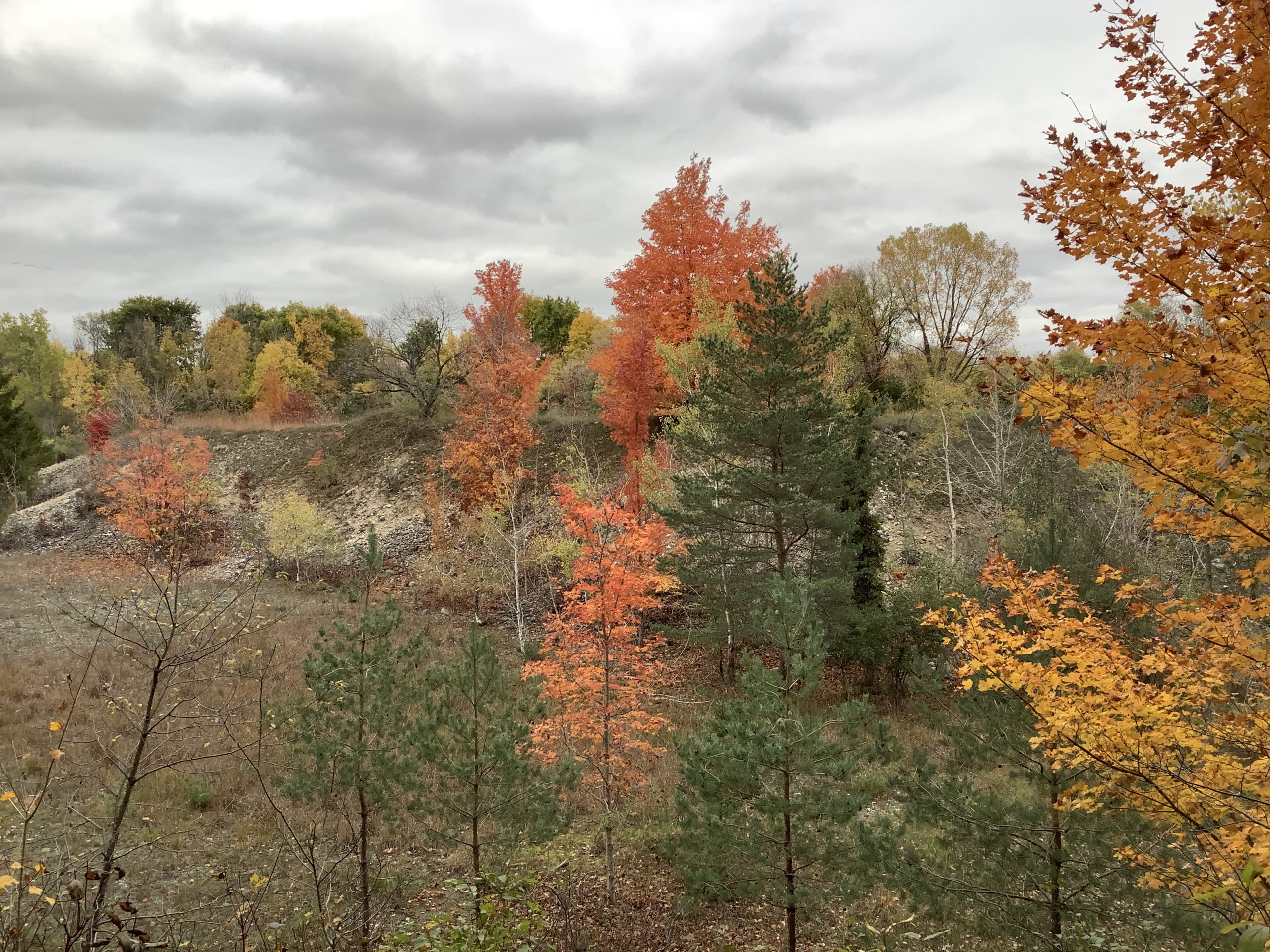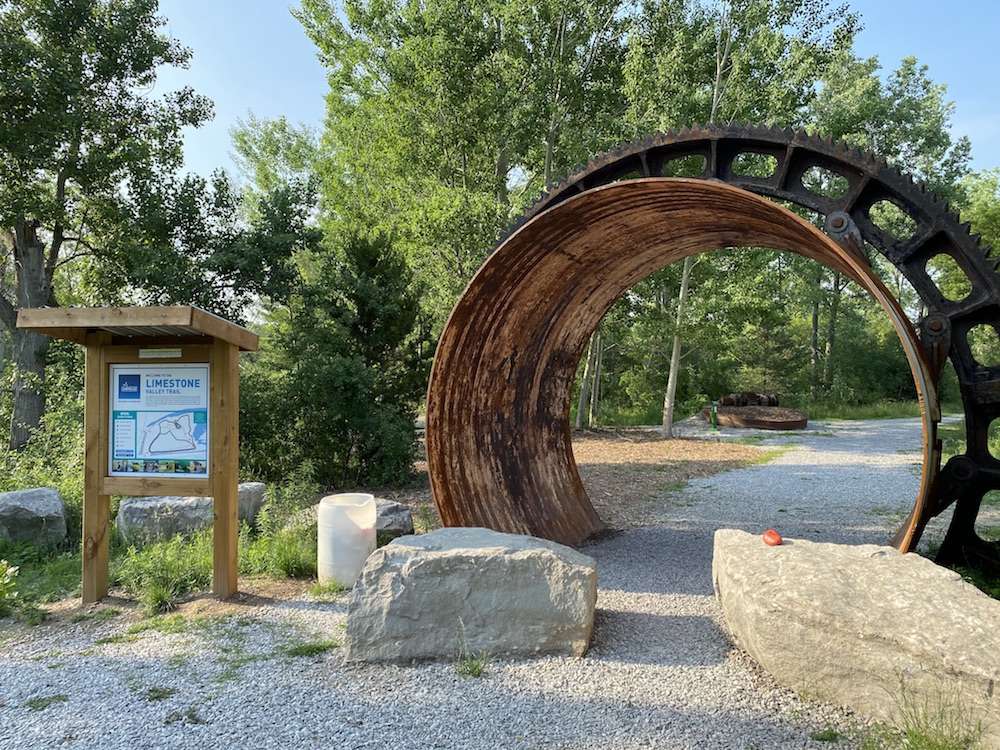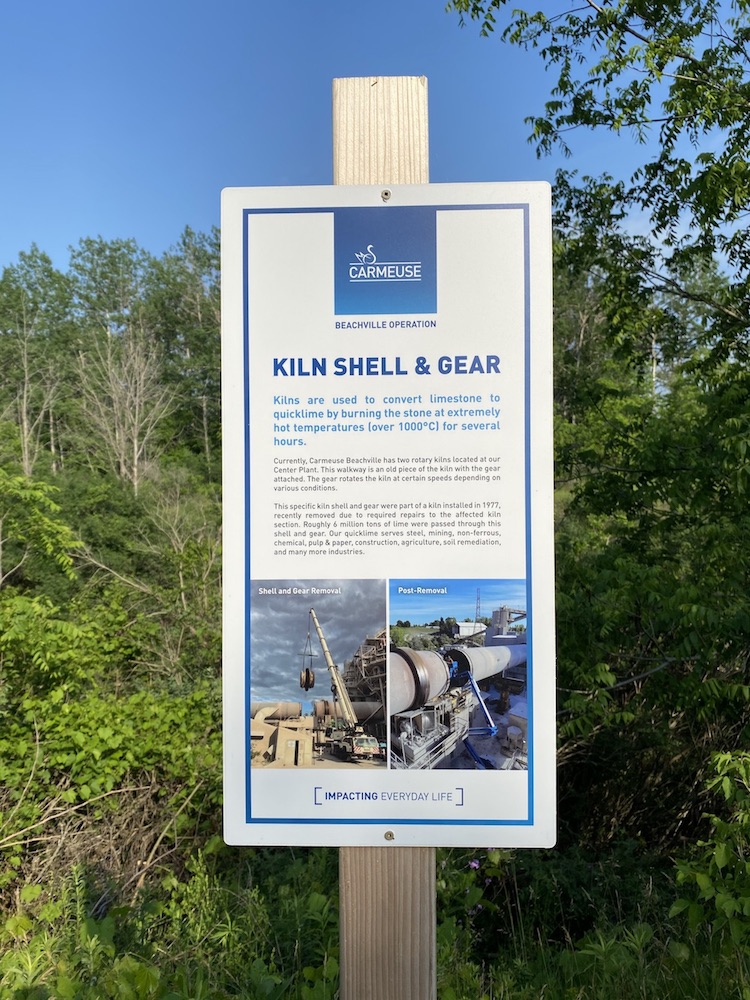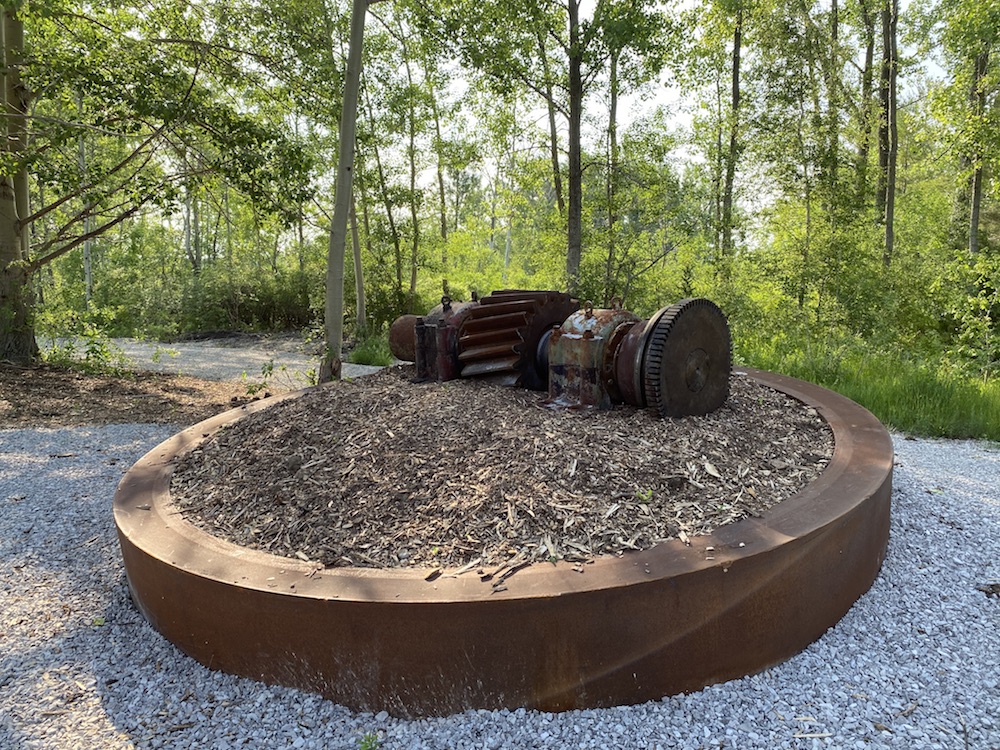The Fate of the Quarries
If we look ahead, we must acknowledge that the limestone reserves formed along a corridor in the Beachville area thousands of years ago will eventually be depleted. The Ontario Stone, Sand & Gravel Association (OSSGA) has argued that “stone, sand, and gravel are being used at a higher rate than can be supplied for the future.” So what happens when the pits are empty?
Aggregate companies, like Carmeuse, cannot leave massive holes in the earth once their digging is done and mining operations cease. The Province of Ontario requires that all mined mineral-bearing lands be rehabilitated. A company’s rehabilitation plans must describe how its mining sites will be returned to their original, natural states. Rehabilitation plans can also outline alternative fates for depleted pits.
West Quarry Lake, once the site of Innerkip Lime and Stone, flooded in the 1990s and has since been left to naturalize. Over the years, it has become a natural habitat for waterfowl and various plant species. The Ministry of Natural Resources has identified the endangered species, American Columbo, at this site. This endangered species has been able to thrive in this area. Rehabilitation can lead to the protection and preservation of nature and wildlife.
Rehabilitated quarry pits have also been turned into recreational sites, including swimming holes, hiking trails, and campgrounds.
Over the last two years, Carmeuse has rehabilitated parts of the old Standard White Lime quarry. They have built bat boxes and birdhouses for local wildlife. They have made recycled kiln tyres into borders for pollinator gardens and installed a former kiln shell as the trailhead for a newly christened “Limestone Valley Trail.” Along the trail are signs that share the brilliant stories of the bedrock of Beachville. This rehabilitation project is intertwined with an appreciation for history, ensuring that Beachville’s quarries are remembered even as the land is recuperated.






